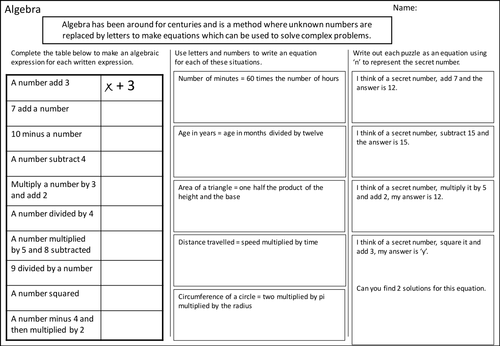Number: Algebra
Throughout these chapters, pupils use algebra as a language for expressing unknowns and general rules.
Pupils have already had to find unknowns, patterns and general rules in previous topics. They may have encountered missing number problems, or been tasked with finding the missing angle in a polygon, for example.
Now, pupils will begin to use symbols to express unknowns and numbers, as well as learn some of the rules for manipulating them. In doing so, they will see that algebra helps them to generalise statements and tackle problems that they have only previously been able to solve using diagrams (eg, bar models) or by trial and error.
It is important that pupils are introduced to algebra through concrete objects and pictorial representations, so that they are able to understand the abstract steps involved in solving a simple algebraic equation.




